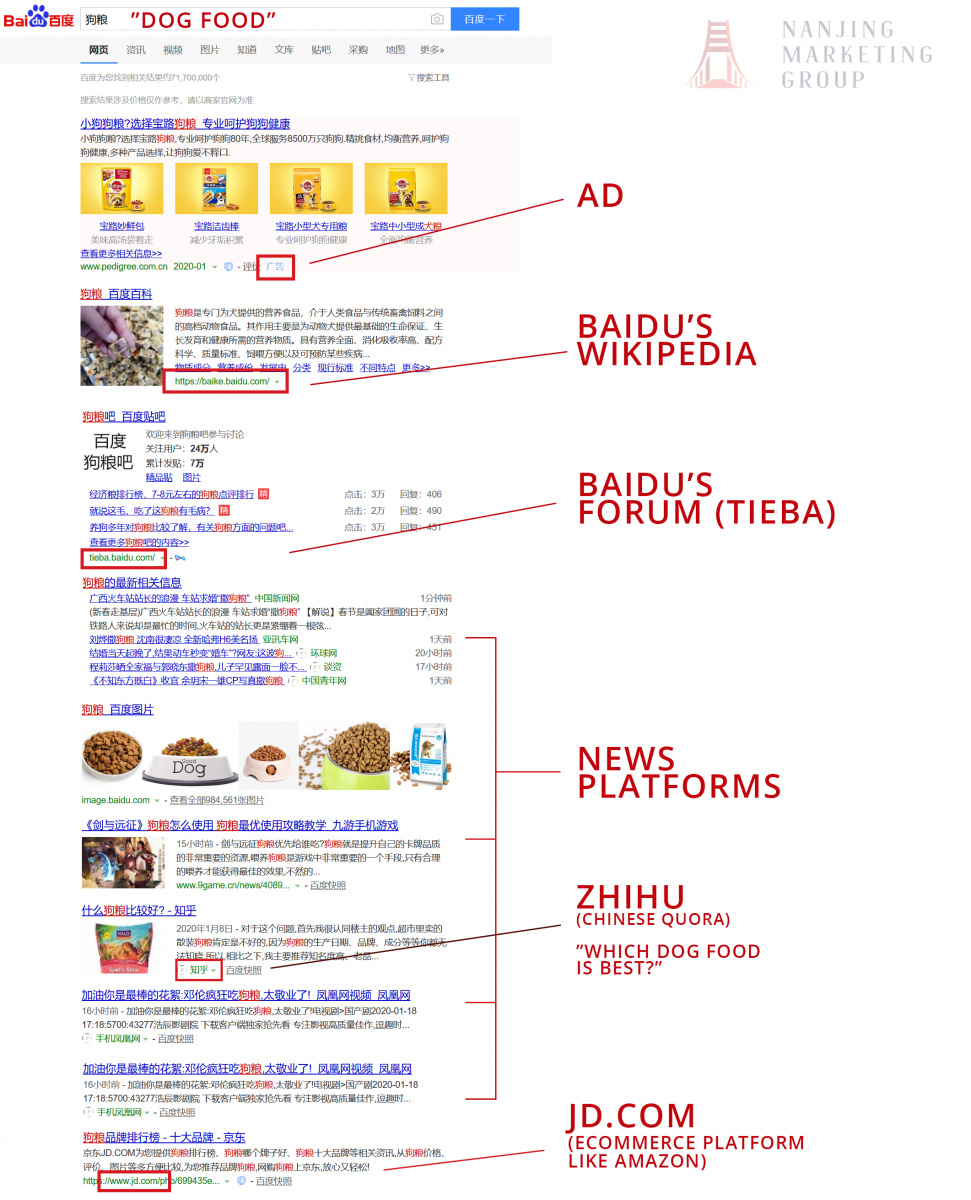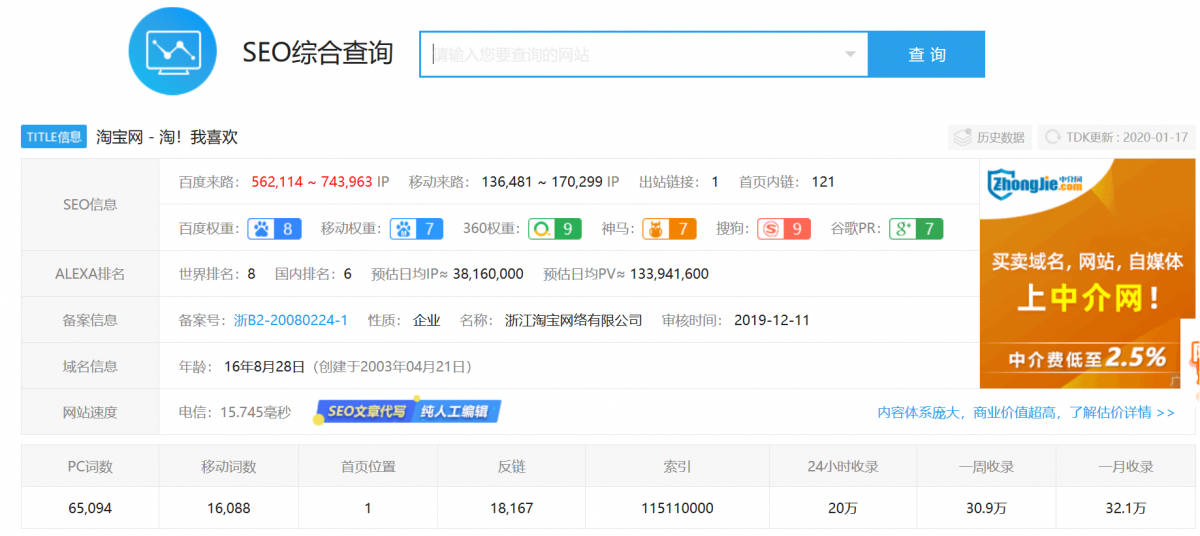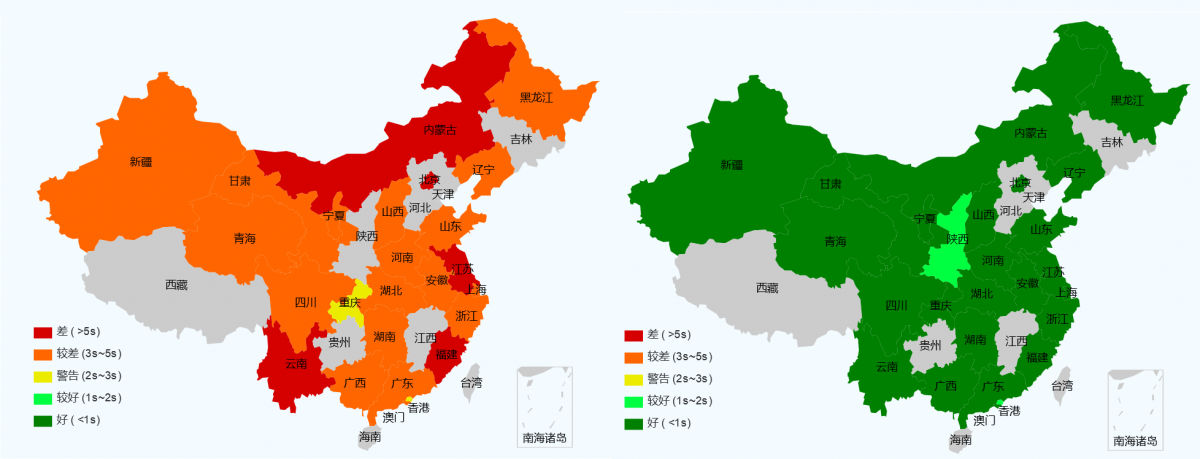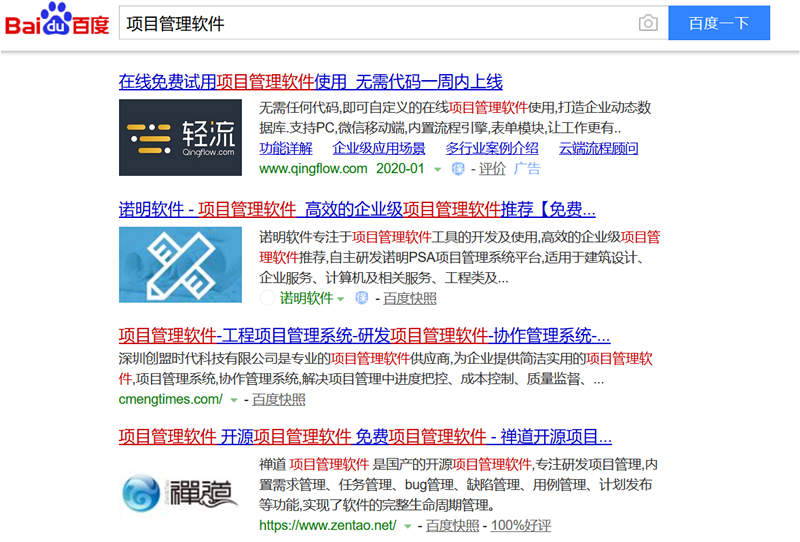Let’s begin with some practical SEO advice to help you get started with Baidu. If you’re going to have a website that you want Chinese people to visit then you probably want them to rank on Baidu too. Baidu is the main search engine in China, and while it shares many characteristics with Google; it is fundamentally different in a number of ways.
Near the top of this page, you can find our full checklist for Chinese on-site technical SEO. It’s from the same document that we use in-house to make sure we haven’t forgotten things. It’s going to help you get your foot in the door and avoid any major issues that may prevent your website from getting indexed in China.
Of course, the main principle behind successful SEO and marketing is more about creating valuable, useful content for users. Over the years (and for Google especially) those technical aspects of SEO have become less important, or at least they have become easier to master. And a lot of that is true for Baidu too.
The Checklist
PREPARATION
You have installed:
- Google Search Console – Useful for finding errors, especially related to Google.
- Baidu Ziyuan – Baidu’s equivalent of Google Search Console.
- An analytics platform that you find useful, such as Google Analytics.
- Baidu Tongji (optional) – Useful for analyzing traffic from Baidu.
- You have started rank tracking with a tool such as Dragon Metrics.
DOMAIN CONFIGURATION
- Choosing where to place the Chinese content can be difficult. Besides SEO, it might affect your developers or content managers. Make sure the Chinese content is placed in one of these places:
- A subdomain such as in “zh.yoursite.com”.
- A unique domain, such as in yoursite.cn, or yoursite4china.com.
- A subfolder, such as yoursite.com/zh/chinesecontent
- The same content is not on multiple subdomains.
- The site resolves to either http or https. There shouldn’t usually be both http and https versions of pages available. Baidu will likely begin to prefer https, so use it when possible.
LOADING SPEED, VISIBILITY
- The site loads quickly. Speed is a major issue. We don’t cover it in detail here, but our dev team can deal with it. Here’s an example. To check:
- Use a tool, such as 17ce.com.
- Have at least 3 people in China check manually.
- Content on the page is visible to search engines. It should generally be written in HTML, not hidden in javascript or hidden in Flash. If you can check the page source and read the text, search engines should be able to too. Try using http://www.seo-browser.com/ to see how a page looks to search engines.
- Images are of an appropriate file-size.
- If the website has an ICP License, it is shown in the footer.
STRUCTURE
- The robots.txt file does not block any important pages or sections. To view it, go to the website URL, such as yoursite.com/robots.txt, or find a tool that can search for it.
- URLS are written in pinyin (for Chinese-language pages) or English text (for English-language pages). Chinese characters are not a good option.
- URLs are written in lowercase (source).
- URLs include hyphens between words, not underscores or other punctuation.
- URLs are structured clearly and hierarchically. For example:
- Pets.com
- Pets.com/dogs
- Pets.com/dogs/dogfood
- Pets.com/dogs/dogfood/abc-10-pound-dogfood-bag
- The hierarchy is not unnecessarily deep. Three or four levels is more than enough for almost all sites.
- URLs are static, not dynamic. URLs with a “?” in them are not ideal for SEO. Use static URLs instead.
STRUCTURE (OPTIONAL)
- The site uses breadcrumbs that match the URL structure (Source – Chinese).
- The canonical tag is used. Read more on Baidu or Moz.
- Heading tags are organized in a clear, hierarchical structure. The main header should use “h1”, the secondary header “h2” etc. Only use one h1.
- We make use of proper language tags. Pages in Chinese should use the “lang=zh-Hans” in the HTML tag. For example, instead of this:
<html xmlns=”http://www.w3.org/1999/xhtml” xml:lang=”en”>
Use this:
<html xmlns=”http://www.w3.org/1999/xhtml“ lang=”zh-Hans” xml:lang=”zh-Hans”> - We use the href lang tag if we have multiple versions of the same pages in different languages on the same website. (Read more – English).
- Sitemap is submitted to Baidu.
CONTENT
- The website has Chinese-language content!
- There’s a title tag for each page.
- About 20 to 30 Chinese characters in length.
- Uses only Chinese characters, English letters, or the following characters: – _ —( ) |
- Contains the core keyword for that page.
- There’s a meta description for each page. When people search on Baidu and see the title and meta description, you think they’ll be likely to click it.
- About 75 Chinese characters is fine. If it’s much more than that, it will likely be cut off.
- Does not contain funny characters or numbers like “***”.
- Uses Chinese punctuation, not the English variants. Use “。” as a period, not “.”.
- Important pages have an image with a ratio of 121 wide by 75 high. These images are likely to show in search results. This image should also have an alt tag that contains a core keyword.
- Images have alt tags that are descriptive and written in Chinese characters.
- The 404 page contains Chinese-language content that is helpful for users to find what they want.
FOLLOW UP
- Check to see if there are any major crawl errors. Use Google Search Console and Baidu Ziyuan to check.
- Crawl with a tool like LinkExaminer (by AnalogX). For important pages, make sure each page:
- Has a title tag
- Has a meta description.
- (Do not worry if there is or isn’t a meta keyword tag.)
- Does not link to 404 pages.
- Is not marked “nofollow”.
- There is little duplicate content. This may be a complex issue, but if you see the same content on your site via multiple URLs, it’s a problem. Google Search Console will help detect this.
Search results pages on Baidu
Before we examine the specific details, let’s analyse the format of a typical Baidu search result.
Let’s search for “dog food”.

Looking at the above image, we can see that the first spot on the search result page is taken by advertisements in a product listing format. Usually, the second spot is an ad with an image, and the third and fourth show more ads! The first organic search result is usually the fifth spot on the result page. It is Baidu’s answer to Wikipedia. Below that, there are results from Baidu Tieba – which is a forum/social platform.
Next up, we have related information about dog food from news platforms, pictures of the products, and organic search results. Frequently, the organic search results contain images that are not considered user-friendly as they have little to no relationship with the content or they are obstructed by text.
One of the search results is also a link to JD.com which is the second biggest eCommerce platform in China, similar to Amazon.
We can also click-through and proceed to other pages where we can see more information. There are ads on the second page as well, you can tell by the “广告” label. The ads should direct us to places where we can make purchases directly. There are more organic results, such as these from Zhihu – the Quora of China.
Some of the results are purchase-oriented; others are just informational.
Before you start working on SEO in China
So, that’s what the Baidu results pages look like. Now, back to the list.
Before we get started, we need to gather some information in order to start the preparation. If you’re a Western marketer, you probably have Google Analytics or something like it setup. Google Search Console provides a lot of useful information about the errors Google finds on your website and what Google knows about your website in general. Baidu also has the equivalent of these tools: Baidu Ziyuan is similar to Search Console, and Baidu Tongji serves the same function as Google Analytics. For the purpose of SEO, in particular, we definitely want to install Baidu Ziyuan- that’s the number one tool out of these four and the one we find most useful.
After launching the website we will be able to check Baidu Ziyuan and see if there are crawl errors, see how many pages are indexed and submit the site map, etc.
Also, you want a rank tracking tool. You may have one you like already; some may work well within China while others don’t. Sometimes some of the tools do not allow you to perform searches within China, and that can be problematic.

Our team likes to use Aizhan.com. It looks old-fashioned and primitive (like something from 1999) but it contains a lot of useful features. We use it to check Baidu authority and other SEO analytics; also for rank tracking, of course.
After you have those things set up, you can track data over time to check your results.
Domain Configuration for Chinese SEO
Domain configuration is really important. You have to choose: are you going to use a new website for China, are you going to use a subdomain, or subfolder? Luckily, for SEO purposes, all of these things are going to be OK, and how you proceed is probably going to be based on other factors.
From my point of view, as a marketer, it would be great if you can create a separate website that is really focused and hosted in China, loads quickly and has information that is specifically tailored to the Chinese market.
But a lot of the time we do not have that option, of course. So, putting it on a subdomain or subfolder will also work. For SEO, we just want to avoid the situation where the Chinese content is unseparated from the English-language content. For example, some websites will have multiple languages on one page – with the option to view the information in a variety of different languages with the click of a button. But that can put unnecessary strain on a search engine, and it ends up overworking and complicating the process.
We want a piece of content to be located in one place. For users, it makes no difference if the content is placed on Yoursite.com/zh compared to www.Yoursite.com/zh, but for search engines, these can be different pages, so we will use redirects to make sure users only end up in one of these locations.
We’d recommend using HTTPS, the secure SSL connection, not HTTP. You might not use it yet, but it’s important that the user-base is connecting to just one of these, instead of both.
Loading speed and visibility of websites in China
A site needs to be accessible for Chinese people, and accessible for Chinese search engines. The content on it cannot be hidden, the pages and images should be an appropriate size so that they load quickly. Everything would be much more efficient if all the sites were hosted in China but that’s not always possible.
To see how well a website loads, we check it manually within China, and we also use a tool like 17ce.com. If we check a site and it is working, the country display should be in green (see below). If it isn’t then we may have a problem.

Loading speed of a Western site vs. a Chinese site in China
A number of the Western companies that we work with have significant website problems when we check their connectivity initially. We tackled this issue separately on our blog if you would like to read more on the topic (here, for example).
Structural SEO for Chinese websites
So, let’s say at this point, you’ve already decided what kind of domain you’re going to use, and your hosting, and your site loads quickly for Chinese users. Then, you should decide what type of structure best suits your model.
We want to use a clear, logical, hierarchical structure on your website for search engines. Baidu is not as intuitive as Google and may be slower at identifying anomalies or errors on your sites. Google is still, at present, a more advanced and adaptive technology.
URLs should be written in Pinyin (Romanization of the Chinese characters based on their pronunciation) or English; they shouldn’t be written using Chinese characters as even Chinese companies rarely write their URLs using characters. Unusual punctuation should also be avoided when writing the URLs. Moreover, URLs should be formatted using a logical structure. For example, Yoursite.com/category/subcategory/product-page. It should be lined up like that. And, along with the URLs, the menu and the breadcrumbs should follow the same pattern as well.
I would advise against using dynamic URLs – these are the ones with “?” in them. It is not always a problem, but it can be.
You might wonder which of the structural SEO items you can get away with not doing. This is why we listed some of the stuctural items as merely “optional”. As a general guideline, if it’s easy to implement all of the structural SEO advice, go ahead and do so. But if it’s a big hassle to get it done, and if you aren’t having indexation issues on Baidu, you can skip doing any item that doesn’t add value for users.
Website content basics for Baidu
Let’s do another search on Baidu. We’re going to search for “Project management software” in this case.

We see some ads on top, of course; some Zhihu posts (again, the Quora of China); and then we see some results from different companies. I will choose one to analyse the content on that page.
So, we’re looking at Zentao.net. It’s well presented and contains Chinese content. It is quite clear that they put some care into the title tags as they broke down the content into many different chunks of information that are easily digestible. That’s the first impression of the website.

In particular, we’d want to crawl the site and see if there’s a title tag and a meta description for the important pages. The way to write those is a bit different because you can fit a lot of information into Chinese characters. For example, a title tag with 20-30 Chinese characters carries more meaning compared to 20-30 Latin letters.
In the example we are currently looking at, the title tag is 6-8 characters long and contains a few keywords. It’s actually quite common for people, when optimising Baidu, to add more keywords than are necessary into the title. This isn’t a major problem, but it might not be the most relevant for the user.
For both the tile and the meta description, we want to think about what it looks like on a search result page. It’s beneficial to write something persuasive and informative to provide users with a comprehensive overview of what the page contains before they enter, giving them an accurate sum-up of what they’re going to get.
The other thing to consider though is images that show up on the results page. You should put images on the page in a certain size and format, so it is easy for Baidu to identify and display them. It may not be easy to begin with, but you can play around with it and eventually, you will get it right. Images should also have ALT tags.
Don’t forget about a 404 page, that is helpful for users if they encounter something that is non-retrievable. In this case, at least, it gives a search box in Chinese, which is better than nothing.
Follow-up
All the things we’ve discussed so far seem pretty basic but I understand that they may be confusing for those who don’t really know much about SEO. I hope that this list will provide you and your company some valuable pointers on how to improve your Chinese SEO.
Of course, this is just a basic introduction to the basic principles behind SEO. If you have a complex site, with many different pages, categories, filters, and many languages; or you not only consider SEO, but also how to integrate your SEO with content and social marketing; or, how to get it done in a way that your development team can handle, that’s where things start to get more complex. This level of work would require more planning and forethought prior to executing. Content is going to be key for SEO. Hopefully, you can overcome these technical issues following our checklist and then you’re ready to create great content for your Chinese readers. Remember that you should put the content on your website, as well as on other websites that Baidu is going to be crawling.
Later on, you can follow up by using Baidu Ziyuan or Google Search Console to see if there are errors. There’s also a tool called Link Examiner that I like to use that will crawl the website and find out what type of errors there are on different pages.
We also check up on duplicate content which may be a complex issue. Basically, you want to have a piece of content on one page, and not have the same content shared on multiple pages on your website. The problem is that other websites will probably copy your content and paste it as their own too.
So, this is covering what I wanted to discuss for the Chinese technical SEO for your website. If there are some other topics related to this, or if you want to let us know what you think – leave a comment!
If you’re looking for more basic training on Chinese marketing, including search, social, marketing plan, etc. check our China Marketing 101 guide here.
